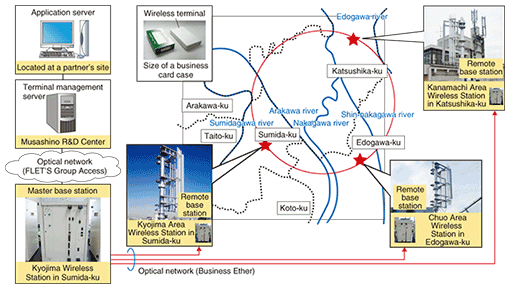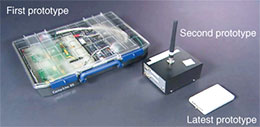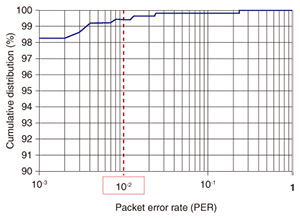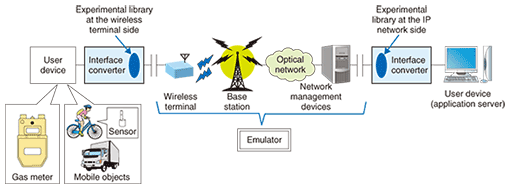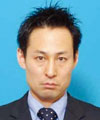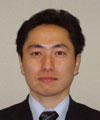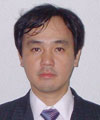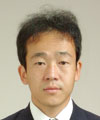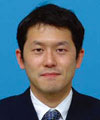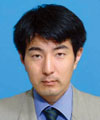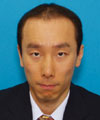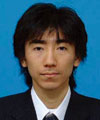 |
|||||||
|
|
|||||||
|
Special Feature: R&D of Wide-area Ubiquitous Network to Create New Services Vol. 8, No. 6, pp. 14–18, June 2010. https://doi.org/10.53829/ntr201006sf3 Feasibility Test of Next Generation Wireless Network at a Special Ubiquitous ZoneAbstractThis article describes a Next Generation Wireless Communication Network feasibility test being conducted at a special ubiquitous-computing zone using NTT°«s wide-area ubiquitous network, which connects compact wireless terminals economically and allows communication with objects.
1. IntroductionNTT is conducting a feasibility test of the Next Generation Wireless Communication Network under the auspices of the Ministry of Internal Affairs and Communications (MIC). The aim is to establish a model that can be developed internationally based on a Japanese initiative and provide a framework for developing and testing world-leading information and communications technology (ICT) services [1]. Special ubiquitous-computing zones (called “Special Ubiquitous Zones°… by MIC) have been established on the basis of MIC°«s “ICT Reform Development Program°… and “ICT International Competitiveness Enhancement Program°…. We have built a test environment at a Special Ubiquitous Zone in Tokyo and are conducting an experimental verification of inter-object communication in this environment using radio waves over NTT°«s wide-area ubiquitous network (WAUN). The test, which will continue until March 2011, has three main aims. (1) Check how well developed the individual technical elements, in particular wireless connection technology, are through experiments in the field (2) Get technical feedback through experiments in an actual environment under operational conditions that meet user needs (3) Implement applications and check how useful it is to create new services that are safe, secure, and eco-friendly 2. Test environmentSince 2008, we have been conducting a feasibility test in six wards in Tokyo using a frequency in the 280 MHz band. In a field test conducted in Kanazawa in 2005, we confirmed that the target radio transmission distance of 3.5 km is feasible for a wireless terminal with transmission power of 10 mW, when lines of sight from base stations are not overly obstructed by buildings [2]. In contrast, the present test zone is located in an urban area where lines of sight from base stations are severely obstructed. To cope with radio propagation loss (shadowing) caused by the shielding effect of high-rise buildings, the wireless system uses site diversity. The zone is outlined in Table 1 and the locations and test environments are shown in Fig. 1.
The wireless system consists of three remote base stations and one master base station to achieve site diversity. The zone spans three wards (Edogawa-ku, Sumida-ku, and Katsushika-ku), while the test areas span six wards. Each remote base station is installed on top of a building located at a cell edge in a different ward. The cell radius is 3.5 km. The three remote base stations are connected to the master base station by an optical network using digitized radio on fiber. This large cell size means that a single cell could cover the entire area inside the Yamanote Train Line (circular route). There are three network management servers: management database (MDB), radio access network server (RANS), and Internet protocol gateway (IP-GW).
All three servers are installed in NTT Musashino R&D Center, which is connected to the master base station by an optical network (virtual path network built using FLET°«S Group Access provided by NTT EAST). We have developed several versions of wireless terminals in an attempt to reduce the terminal size while still satisfying the target transmission power and reducing terminal power consumption. The aim is to enable a wireless terminal powered by a single button battery to remain operational for more than five years. The prototypes developed so far are shown in Fig. 2. The latest version is as small as a business card case. In addition to supporting the wireless interface, the wireless terminal supports a serial interface so that user devices, such as a sensor device and an automatic meter, can be connected to it.
3. Wireless connection verification experimentsUsing the test environment, we checked the feasibility of site diversity and measured radio propagation properties. Specifically, we moved a wireless terminal at random inside a cell and examined the percentage of successful wireless connections and the quality of packet communication within the cell. As an example, Fig. 3 shows the measured reception quality of radio signals of packets sent by an outdoor wireless terminal (transmission power: 10 mW) and received by a base station. Specifically, it shows the cumulative distribution of the packet error rate (PER) in the cell. The PER of one sample was measured within a 10,000-m2 section (100 m × 100 m). The PER was smaller than 0.01 when the cumulative distribution was 99% or higher, meaning that a wireless connection can be set up almost anywhere within a 3.5-km-radius cell.
The above result verifies that site diversity makes it possible to meet the conflicting requirements of using a wireless terminal whose transmission power is as low as 10 mW in a cell whose radius is as large as 3.5 km. 4. Feasibility test of applicationsUsing this test environment, we are not only verifying wireless technology but also examining the feasibility of some applications. The configuration of the test system is shown in Fig. 4. In this system, some user devices, such as sensor devices, are connected to wireless terminals while other user devices, such as application servers, are connected to the WAUN gateway server. Besides the interface for connecting sensor devices to wireless terminals and the interface for connecting application servers to network management devices, a set of software libraries is provided to allow software programs to use the WAUN at the application programming interface (API) level. These libraries make it possible to develop applications for the feasibility test efficiently.
We have also built a WAUN emulator to check interoperability efficiently. This emulator allows interoperability tests to be conducted without actually using the wireless system. In other words, it is possible to proceed with a feasibility test step by step (first using a wired environment and then using a wireless environment). Using this test system, we have conducted feasibility tests of several applications. For example, in a gas meter reading system, a gas meter reading center is connected to gas meters through the WAUN. We have confirmed the feasibility of providing services by data transfer over the network. For example, the gas meter reading center can obtain meter readings or send a command to an individual gas meter to close its shutoff valve to suspend the gas supply. In addition to confirming the feasibility of data transfer over the wireless system, we are examining the quality of applications so that the measurement results can be reflected when determining protocol parameters suitable for use in an actual environment. Specifically, we are trying to specify and verify parameters of protocols used in the core network and parameters of applications, such as signal waiting times (timer values) and the maximum number of signal retransmissions. We intend to continue with experiments of these types at the Special Ubiquitous Zone in Tokyo and check how useful individual applications can be in society. 5. Future experimentsTo further strengthen WAUN testing capabilities, we are studying the possibility of increasing the test scale by increasing the number of wireless terminals. We are also considering the possibility of conducting experiments with various partners with a view to creating new safe, secure, and eco-friendly applications suitable for a ubiquitous-computing society. For this purpose, we are participating in the Wide-Area Sensor Network Interest Group in the Ubiquitous Networking Forum. This group is an open forum for studying and promoting the widespread use of wide-area sensor network technology. In this group, we plan to study a variety of applications together with new partners who join the feasibility test and study technical issues identified during feasibility tests and other experiments. Through these activities, we will conduct feasibility tests of applications with a variety of partners with the aim of having the WAUN actually implemented in the future. References
|
|||||||









